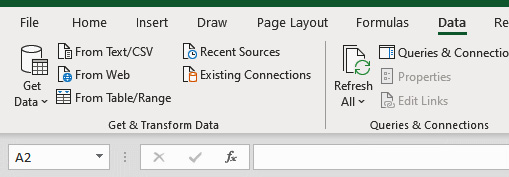What is Power Query?
Power Query is an extract-transform-load (ETL) tool. It has greatly extended the sources from which data can be imported into Excel. Power Query has an impressive array of transform tools that crucially can be accessed and applied without the use of formulas. Finally, with the option to create a connection only, it reduces the file size tremendously over previous methods.
The first step in using Power Query is to import data (Get Data) into Excel. In Excel 365, you do this by selecting the desired source from the Get Data button in the Get & Transform Data group under the Data ribbon.
Note
From 2010 to 2013, you could access Power Query as a separate ribbon in Excel. However, from 2016 on, Power Query is now found in the Data ribbon as the Get & Transform group.

Figure 5.2 – The Get Data button in the Get & Transform Data group
Here, you are given the option of extracting data from a wide range of sources...



